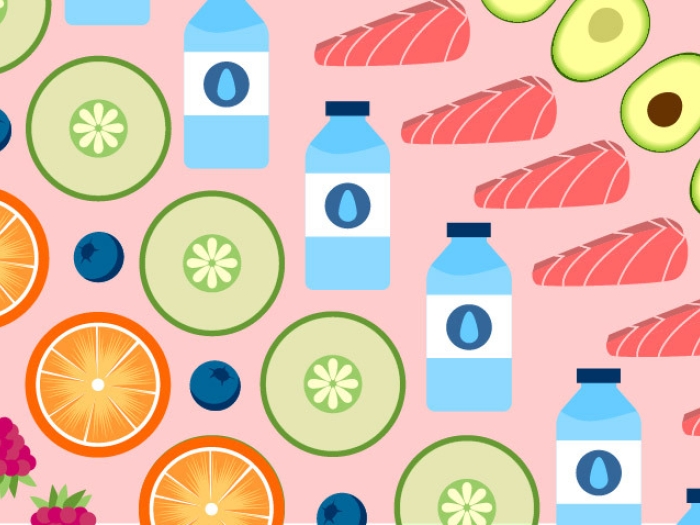A mask that delivers pressurized air during sleep, CPAP is a standard treatment for obstructive sleep apnea. But other options, when necessary, are available
7:00 AM
Author |

This article was updated on September 22, 2023.
Patients with obstructive sleep apnea experience obstructed or restricted breathing for periods of 10 seconds or longer during sleep. Doctors typically can diagnose obstructive sleep apnea in two ways: via an overnight sleep study at a clinic or an at-home test.
MORE FROM MICHIGAN: Sign up for our weekly newsletter
Left untreated, obstructive sleep apnea may raise the risk of high blood pressure, stroke, heart attack, heart arrhythmia or insulin resistance.
The standard treatment for obstructive sleep apnea is continuous positive airway pressure, or CPAP, which involves wearing a mask during sleep.
The device conducts pressurized air through the nose, or through the nose and mouth, to the throat. That pressure keeps the throat from collapsing during sleep to enable normal breathing.
But the regimen isn't effective — or appropriate — for everyone.
"CPAP therapy is not well tolerated by some," said Ron Aronovich, D.M.D., an oral and maxillofacial surgeon with the Michigan Medicine Alternatives to CPAP Clinic.
Still, he notes: "Treatment of obstructive sleep apnea can have a significant impact on a patient's health and quality of life. If CPAP therapy isn't the right treatment, there are other suitable alternatives."
CPAP alternatives for sleep apnea
1. Some patients experience less airway obstruction when sleeping on their sides, making positional therapy an option for them.
2. A mouth device known as a mandibular advancement appliance works by moving the jaw forward, which increases the size of the upper airway and reduces air resistance that leads to sleep apnea and snoring. It may be effective for some patients, especially those with mild or moderate obstructive sleep apnea.
3. If a patient's tonsils and adenoids are enlarged, removal is the recommended treatment. Tonsils behind the palate and tongue are most likely to require removal when they are contributing to airway obstruction or snoring.
SEE ALSO: Yes, You Really Do Need 'Beauty Sleep'
4. Some patients can have a long palate shortened with a procedure known as a uvulopalatopharyngoplasty, also known as UP3, or uvulectomy — a procedure used to remove excess tissue in the soft palate to widen the airway and allow air to move through the throat more easily. This reduces snoring and may be effective in mild to moderate cases of obstructive sleep apnea.
5. When the airway collapses behind the tongue, a genioglossus advancement may be recommended. The surgical procedure is designed to move a portion of the chin bone forward, thereby pulling the base of the tongue muscles forward to increase airway size.
6. Those with a backward collapse of the tongue, diagnosed via a nasal endoscopy, can also be treated using a hypoglossal nerve stimulator. This consists of a breathing sensor and a stimulation lead powered by a small battery. Implanted during a short outpatient procedure, the device continuously monitors a recipient's breathing while he or she sleeps. It delivers mild stimulation to key airway muscles and gently moves the tongue and other soft tissues out of the airway to enable breathing during sleep.
7. Patients with shortened upper or lower jawbones may benefit from maxillomandibular advancement surgery, in which the upper jaw, the maxilla, and the lower jaw, the mandible, are lengthened and moved forward. This surgery is reserved for patients with moderate to severe obstructive sleep apnea.
8. When a patient's jawbones are narrow, or long enough but their obstructive sleep apnea is severe, the jawbones may be widened using maxillomandibular expansion. This option requires a combination of orthodontic appliances and surgery to expand the jawbones, with the goal of enlarging the airway and increasing the space available for the tongue.
9. Excessive weight or obesity may be a major contributor to a person's obstructive sleep apnea. Weight gain can cause fat tissue to build up around the throat and at the base of the tongue. Medical weight loss or bariatric surgery may be indicated in certain cases.
10. Tongue reduction surgery may be helpful when the tongue is abnormally enlarged. Reducing the size of a person's tongue may cause the airway to collapse less, thus improving airflow and breathing.
For more information or to make an evaluation appointment, contact the Michigan Medicine Alternatives to CPAP Clinic.

Explore a variety of health care news & stories by visiting the Health Lab home page for more articles.

Department of Communication at Michigan Medicine
Want top health & research news weekly? Sign up for Health Lab’s newsletters today!





